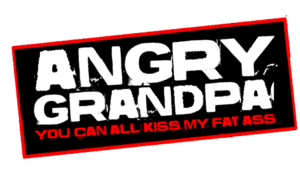Synopsis[]
Mario is super in a whole new way! Combining the finest 3-D graphics ever developed for a video game and an explosive sound track, Super Mario 64 becomes a new standard for video games. It's packed with bruising battles, daunting obstacle courses and underwater adventures. Retrieve the Power Stars from their hidden locations and confront your arch nemesis -- Bowser, King of the Koopas!
In Other Languages[]
| Language | Title |
|---|---|
| Japanese | スーパーマリオ64 |
| Korean | 슈퍼 마리오 64 |
Release timeline[]
| Console | Country of origin | Date |
|---|---|---|
| Nintendo 64 | Japan | June 23, 1996 |
| Nintendo 64 | USA | September 29, 1996 |
| Nintendo 64 | UK | March 1, 1997 |
| Nintendo 64 (re-release) | Japan | July 18, 1997 |
| Nintendo 64 (re-release) | USA | 1998 |
| Wii | USA | November 19, 2006 |
| Wii | Japan | December 2, 2006 |
| Wii | UK | December 8, 2006 |
| Wii U | USA/UK | April 1, 2015 |
| Wii U | Japan | April 8, 2015 |
VHS[]
Template:Home video A VHS tape titled "Super Mario 64 Perfect Video" was released just days prior to the North American release of the game. It's sort of like a video game strategy guide, and runs for about 40 minutes in length. The video was distributed by Pioneer, GTV, and Mario the Video.
Music[]
| Sequence Title | Original MIDI Release Date | |
|---|---|---|
| 1 | It's a Me, Mario! | N/A |
| 2 | Title Theme | February 24, 1998 |
| 3 | Peach's Message | N/A |
| 4 | Opening | |
| 5 | Super Mario 64 Main Theme | February 25, 1997 |
| 6 | Slider | January 16, 1997 |
| 7 | Inside the Castle Walls | September 5, 1997 |
| 8 | Looping Steps | |
| 9 | Dire, Dire Docks | January 4, 1997 |
| 10 | Lethal Lava Land | N/A |
| 11 | Snow Mountain | June 27, 1997 |
| 12 | Haunted House | N/A |
| 13 | Merry-Go-Round | September 20, 1997 |
| 14 | Cave Dungeon | |
| 15 | Piranha Plant's Lullaby | |
| 16 | Powerful Mario |
|
| 17 | Metallic Mario | December 23, 1996 |
| 18 | File Select | January 28, 1997 |
| 19 | Correct Solution | N/A |
| 20 | Toad's Message | |
| 21 | Power Star | N/A |
| 22 | Race Fanfare | N/A |
| 23 | Star Catch Fanfare | N/A |
| 24 | Game Start | |
| 25 | Course Clear | N/A |
| 26 | Game Over | N/A |
| 27 | Stage Boss | |
| 28 | Koopa's Message | |
| 29 | Koopa's Road | |
| 30 | Koopa's Theme | |
| 31 | Koopa Clear | N/A |
| 32 | Ultimate Koopa | January 4, 1997 |
| 33 | Ultimate Koopa Clear | N/A |
| 34 | Ending Demo | N/A |
| 35 | Staff Roll | July 29, 1997 |
| 36 | Lakitu's Message | N/A |
The real 36th track in the Super Mario 64 Original Soundtrack is a piano version of the Piranha Plant's Lullaby, which was unused in the game.
Regional differences[]
Of the following facts, these show what is different in the Japanese version of Super Mario 64.
- Several of Mario's voice clips were added in the U.S. version that you won't hear in the Japanese version.
- Princess Peach's voice cannot be heard in the Japanese version at all.
- The first demo where Mario battles Bowser in the Dark World is not in the Japanese version.
- The painting to Jolly Roger Bay is a picture of bubbles underwater with no ships on it.
- In the U.S. version, the coin counter stops at 999, and you can only have up to 255 coins in a saved file.
- The 5th Star in Jolly Roger Bay (Blast to the Stone Pillar) is wide open in the Japanese version, while in the U.S. version, it's inside a yellow "!" box.
- The 2nd Star in Cool, Cool Mountain (Li'l Penguin Lost) is placed above the mother penguin in the Japanese version.
- The "Lakitu's Message" music is not included in the original Japanese version.
- The Chain Chomp from Bob-omb Battlefield makes a different barking sound.
- The Red Coins make a different sound effect that doesn't increase in pitch.
- In "Footrace with Koopa the Quick", if you take a warp to another location, the music will change back to the course's normal music.
In the Rumble Pak re-release version (only released in Japan), nearly all of the voice clips and sound effects from the U.S. version are retained. The last four facts were submitted to TMK on August 27, 2010.
Websites[]
- http://www.nintendo.co.jp/n01/n64/software/nus_p_nsmj (1996-present)
- http://www.nintendo.com/product/n64/sm64/index.html (1996-1997)
- http://www.nintendo.com/n64/super_mario64 (1997-2001)
- http://www.nintendo.com/games/gamepage/gamepage_main.jsp?gameId=249 (2001-2003)
- http://www.nintendo.com/gamemini?gameid=m-Game-0000-249 (2003-2007)
- http://www.nintendo.com/gamemini?gameid=48czfMMYIp_0_alQYMIOS7sgrvUdDq1O (2006-2007)
- http://www.nintendo.com/wii/virtualconsole/games/detail/48czfMMYIp_0_alQYMIOS7sgrvUdDq1O (2007-2010)
- https://www.nintendo.com/games/detail/48czfMMYIp_0_alQYMIOS7sgrvUdDq1O (2010-present)
- http://www.nintendo.com/games/detail/TOEiNDty4AHQngsUnC2Eyog0kBeitORN (2015-present)
